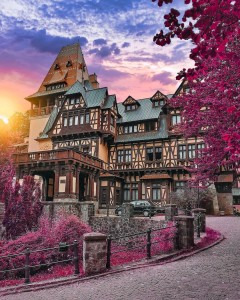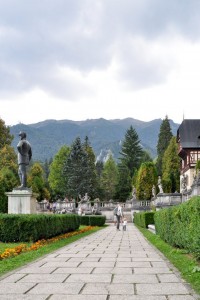Sinaia- the Pearl of the Carpathians
Sinaia was built on a cultural basis and formed together with the Peles Castle. His heart began to beat with the sound of the monastery bell. It has received a holy name and has been declared, in many places, a place blessed by God. Sinaia carries value and style on its shoulders, carries legends and stories with it and looks proudly at the mountains that have always defended it. Its backbone, column towards infinity, is of a cultural type, which starts from the light of the Cumpat in the Casa Enescu, crosses the Peles domain and stops, on the cobblestone streets, at the Casa Iorga. Alecsandri, Caragiale, Vlahuta, Cosbuc, Iancu Brezeanu, Badea Cartan are the cornerstones of cultural Sinai.
Peles Castle
To this reference construction not only for Sinaia but also for Romania, the foundation stone was laid on August 22, 1875. The construction site, respectively the surface of Peles Valley, had been bought by the ruler Carol I (1866-1881) and King between the years. 1881-1914.
Until the completion, in 1883, of Peles Castle, King Carol I and Queen Elizabeth lived in Fossor, completed construction much faster. As for Pelisor Castle, it was started in 1889 and completed in 1903 and was intended for the future King Ferdinand and Queen Mary. However, until Pelisor finished, they lived in Fossor. Even Carol II lived there during the period 1930-1940, as long as he was the King of Romania, except for 1932 and 1933 when the hunting house was burned down by a fire. Following its dispositions, the present Castle Foişor was erected. Peleş Castle has about 170 rooms, unlike Pelişor which has only 70.
It must also be known that Peles is home to one of the most important and valuable collections of paintings in Europe, with around 2000 pieces. After the abdication of King Mihai, in 1947, the entire Peleş complex, except the eponymous castle that entered the tourist circuit, became a place of creation and rest for the cultural people of the time. After the Revolution of December 1989, Pelisor Castle is integrated in the tourist circuit. The courtyard of the castle, of the Bramantes type, with a fountain in the middle of the courtyard, in the purest Renaissance style, pleasantly surprises the visitor. The yard has a cheerful decor, made of plants and flowers; all around, the facades are animated with elegant drawings. The interior of the castle is a real wonder, due to the beauty and richness of the carved wood and the stained glass windows.
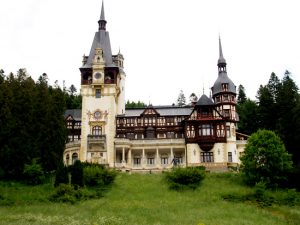
Sinaia Monastery
For tourists who come to visit the "Pearl of the Carpathians", the Sinaia Orthodox Monastery is one of the most important objectives that should be worth all the attention. The Sinaia Monastery, a true cathedral of the Bucegi is situated in a wonderful setting, dating from the end of the 17th century and represents the identity card of the city, as it is the first construction in the space of the present resort. The founder of the Monastery is the Spearman Mihail Cantacuzino, the commander of the army in the Romanian Country of the seventeenth century.
Discover the ''Pearl of the Carpathians'' by booking a tour with Soca Tour Romania.
The construction of the monastery lasted 5 years, from 1690 until 1695. The purpose of the location in this place was twofold: firstly it had to be a defense and protection fortress for the existing commercial road along the Prahova Valley, the road that made the connection. between two major cities of the time, Bucharest and Brasov, and secondly to provide shelter to the numerous hermitages existing in the Bucegi mountains. Initially, the monastery was built to house 12 monks, following the example of Jesus Christ who had 12 Apostles, but, as time went by, the number of monks increased as it was necessary to build another monastery and other living spaces. Due to its strategic position, the Sinaia Monastery experienced numerous Turkish or Austrian invasions, which partially destroyed the construction. Currently, the monastery is a true museum of Romanian art and spirituality.
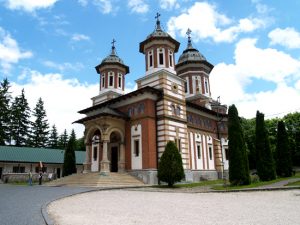
CASINO Sinaia International Conference Center
Located in the northern part of the park "Dimitrie Ghica", the "Casino" in Sinaia is today one of the symbol buildings of the resort. The imposing building was built in record time, for only one year (1912-1913), on the site of the former villa Ghica, the first villa of the resort, erected by Prince Dimitrie Ghica. The casino in Sinaia had the main shareholder Baron de Marçay, at the same time a shareholder in the casino in Monte Carlo, which is why it was speculated that this building would be a faithful copy of the French building. In reality, however, there are only a few elements of interior architecture that could confirm the resemblance between the two casinos.
Carmen Sylva” Cultural Center
It was inaugurated on April 10, 2008 and is hosted by the building of the first primary school in Sinaia. The building was built before 1898, when the company that guarded the Peles Castle left their small barracks, moving to the new spaces specially built to cover the future Mountain Hunters Battalion, which was set up in the town.
Currently, the Carmen Sylva Cultural Center has a library that has over 45,000 volumes, specialized books (philosophy, history, mathematics, chemistry, geography, astrology, etc.), Romanian literature, universal literature, art albums. , children's literature, etc. There are various literary activities (book launches, meetings with writers, debates, workshops, etc.).
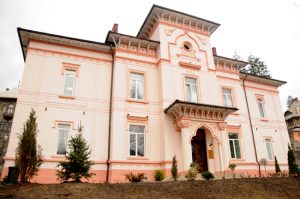
The "George Enescu" memorial house or the "Luminis" villa
It is located in the Cumpatu district, a district of the city of Sinaia located on the right side of the Prahova river. In the bright destiny of George Enescu, the city of Sinaia and the villa "Luminis" have a special significance. George Enescu organized his life in such a way that, during the period between concerts, he found out he could write, making a refuge from the villa in Sinaia. The villa was not accidentally built in Sinaia, because Enescu was linked both sentimentally and professionally to this city, thanks to the support of Queen Elizabeth, Peleş Castle being for him a gateway into the musical cultural world of the moment. The villa was built between 1923 - 1926 by the architect Radu Dudescu from the money brought by the master's concert activity.
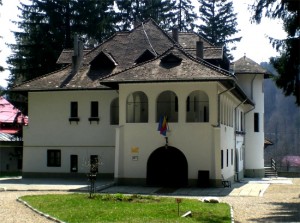
Other objectives from Sinaia: Stanca Sf.Ana, Tomb of Badea Cartan, Sinaia railway station and Regala train station, Nicolae Iorga's house, Alina Stirbei's villa, Vulparia.


